The Independent's journalism is supported by our readers. When you purchase through links on our site, we may earn commission. Why trust us?
How to choose a mattress: An expert-led buying guide
From open-spring to bed-in-a-box designs, you can rely on our expert advice when it comes to mattresses

Getting a good night’s sleep is essential to staying happy and healthy. In fact, it can not only increase your concentration during the day but also lower your risk of serious health problems.
A supportive mattress is key, but buying a new one without doing your research first can lead to sleepless nights and achy mornings. Mattresses can cost anything from a few hundred pounds to thousands, so you have to ensure your bed is worth the investment before you buy it.
We’ve put together everything you need to know before you hit the high street (or browse the web – online-only mattress companies are hugely popular), from the different types of mattresses to firmness levels and so much more.
Whether you’re a side sleeper or suffer from chronic back pain, read on to find out what option is best for you.
What are the different types of mattresses?
There’s a lot of jargon about mattresses, particularly about mattress types. Thankfully, it’s pretty straightforward.
Most are “hybrid” mattresses. These combine springs with memory foam for supportive but comfortable beds. However, knowing the ins and outs of all the different types can help you find the best mattress for you.
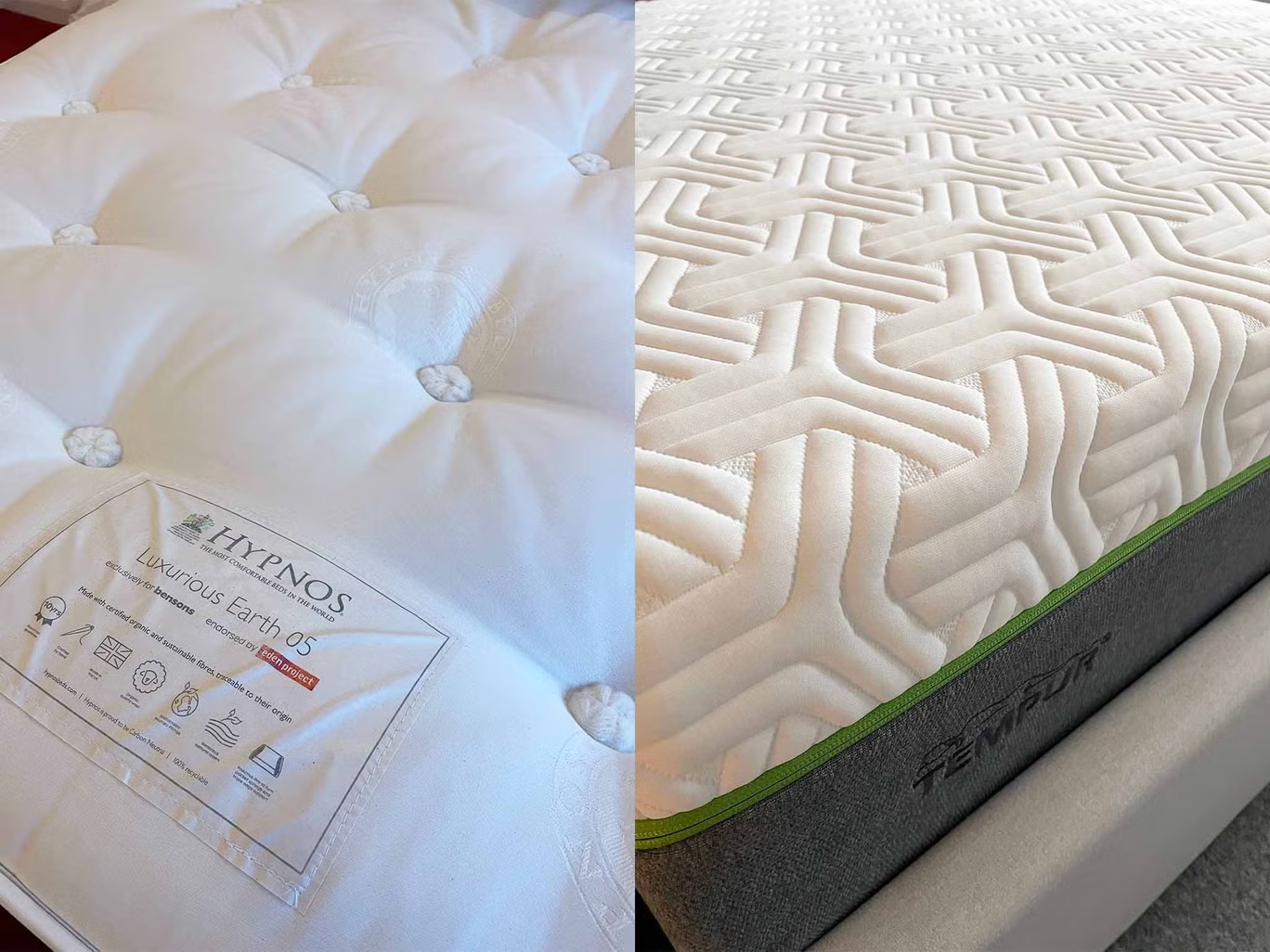
Memory foam mattresses
Memory foam is a mouldable material that springs back to its original shape once deformed. These mattresses will react to temperature and weight, moulding to the shape of your body. This means that a memory foam mattress will absorb your weight and relieve pressure on your joints.
Not everyone likes the sinking sensation of this type of mattress, and it usually feels a little warm, but it’s ideal for those who need support. It will maintain posture and align your spine horizontally when sleeping on your side. It also tends to be the cheapest type of mattress, so memory foam beds can be an excellent choice when shopping on a budget.
These beds can be exceptionally comfortable, but don’t fall for the marketing. Memory foam mattresses are ultimately derived from polyurethane, the same material as kitchen sponges, so if you see a brand advertising a memory foam bed as ‘Nasa technology’, take it with a pinch of salt.
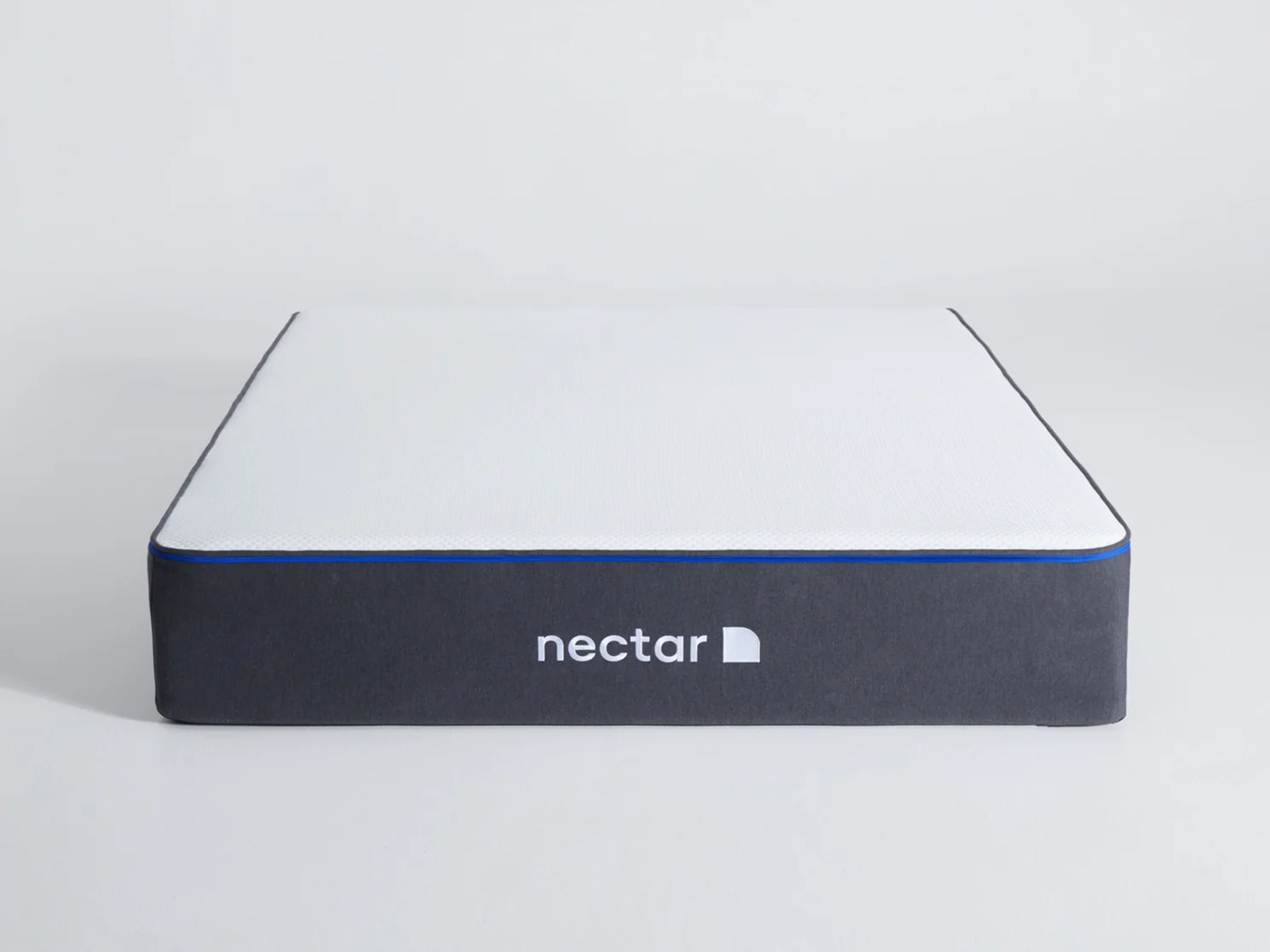
Our favourite memory foam bed is the original Nectar memory foam mattress. Unlike other memory foam beds, there’s no nasty off-gassing smell. Our tester found that it’s just as comfortable as some top-line hybrid mattresses, and while it sleeps a little hot, it has excellent motion isolation, so you won’t notice if your partner turns over in the night.
Hybrid mattresses
Hybrid mattresses are the most common type of mattress. It varies from bed to bed, but they usually include memory foam, latex and pocket springs.
The idea is that these mattresses are designed to give a more balanced sleeping experience. They typically combine the breathability of spring mattresses with the pressure relief of memory foam mattresses.
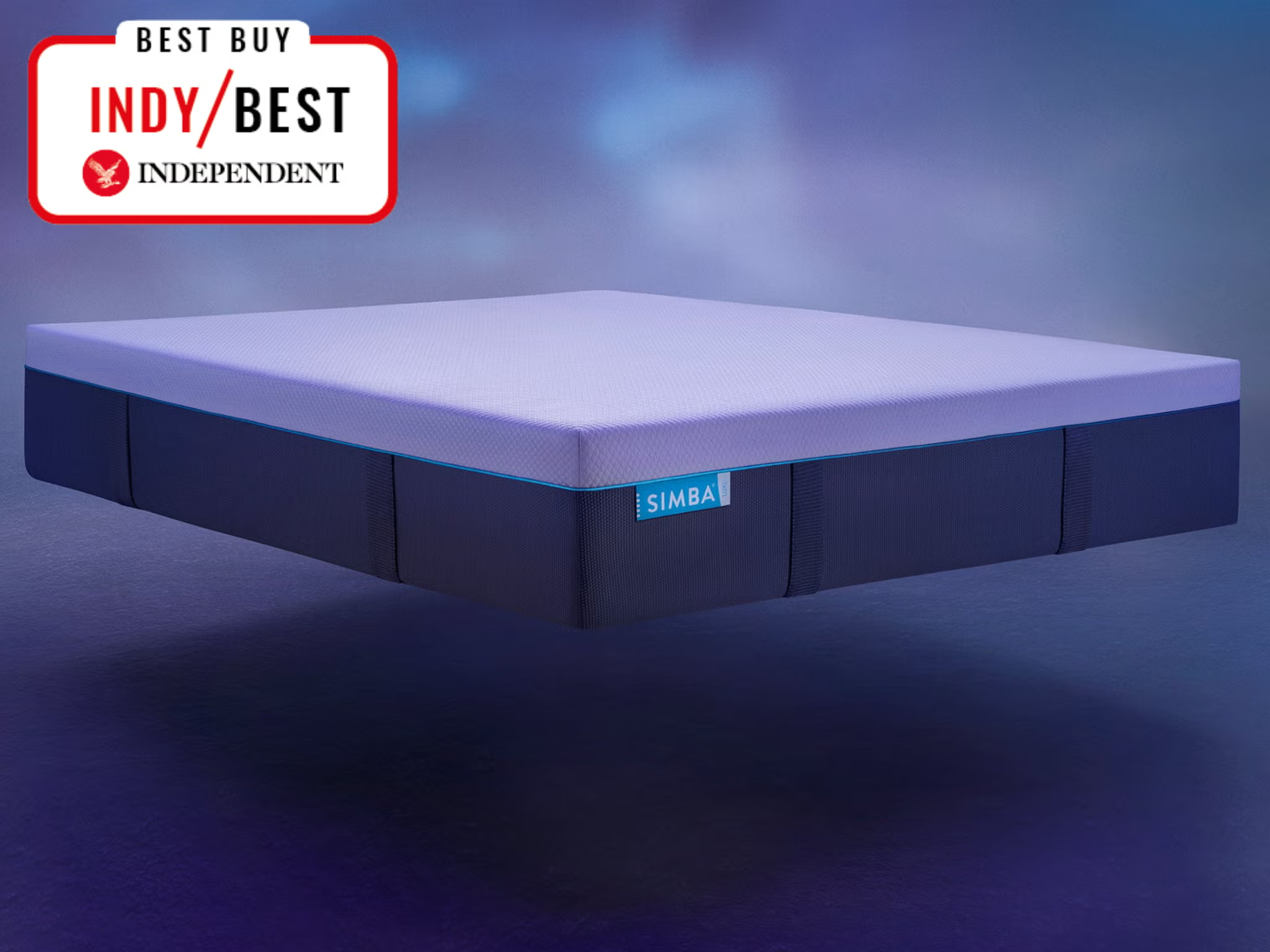
Our favourite hybrid mattress is actually our pick for the best mattress overall, the Simba hybrid luxe. After months of testing, we found that its complicated mix of wool, latex, springs and memory foam makes for the most comfortable bed you can buy.
Bed-in-a-box:
The name refers to the delivery method; removing the painful task of visiting mattress shops and waiting weeks for delivery, these mattresses are ordered online and arrive within days.
Casper, one of the first bed-in-a-box companies, launched in the UK in 2016, and its popularity has seen other brands, such as Simba and Emma, follow suit. Nearly a decade on, most mattresses are bed-in-a-box, like our favourite tested mattress, the Simba hybrid luxe. However, you have lots of options.
Read more: Best pillows, tried and tested for a great night’s sleep
Pocket-sprung mattress
This type of mattress is more luxurious, as it’s made from small springs, each housed in a pocket of fabric. This means each spring moves independently, providing more support than open-spring mattresses. You can buy soft, medium or firm versions, depending on your preference, and they are more breathable than memory foam or latex mattresses (ideal if you’re always overheating at night).
This is a good option if you’re looking for a bed for two people, as the separate springs will cater for your different needs and weights, while they will also minimise the risk of you rolling towards your partner in the middle of the night. These are heavy to turn, though, and can be filled with natural materials, such as lambswool, which may aggravate allergies.
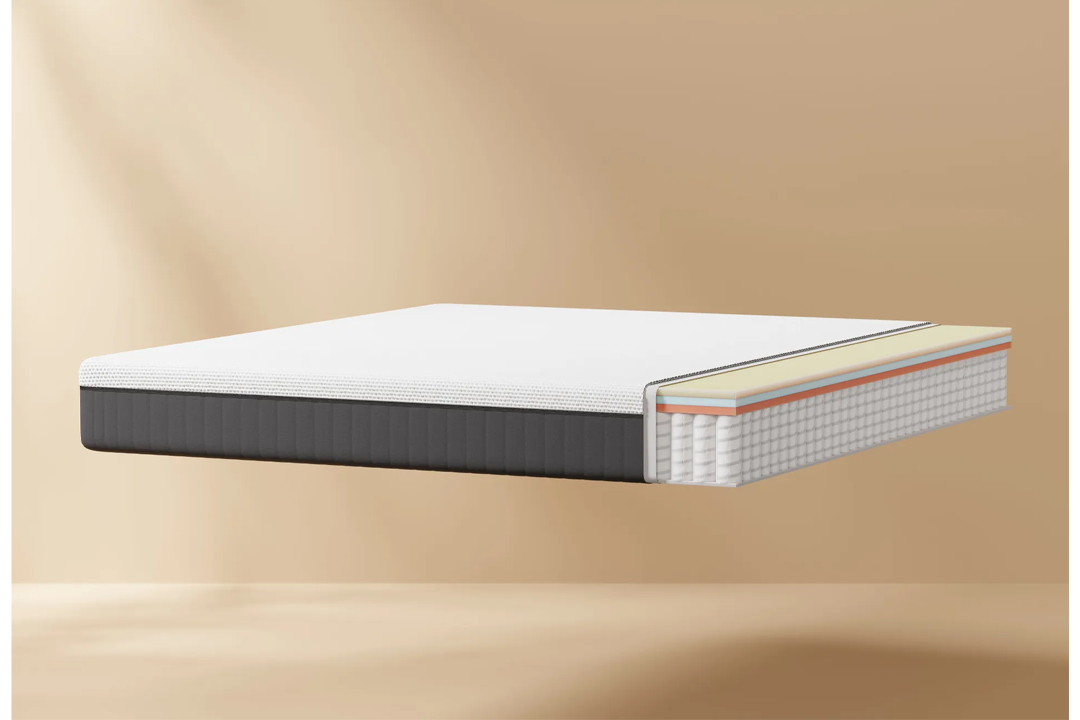
Emma’s hybrid premium is technically a hybrid thanks to three tiny layers of foam, but it mostly relies on pocket springs, so it’s our favourite pocket-sprung mattress. It has hundreds of little springs, perfect for providing a mix of stability and comfort.
As the name suggests, these mattresses are filled with latex foam. It’s an especially breathable material, so you won’t overheat in the middle of the night. It’s also extremely durable and should last for many years. It’s a good option for those with allergies or asthma.
However, they can feel rather solid at first, so they’re better suited to those who prefer a firmer bed. Heavy, latex mattresses can be difficult to turn, and cheaper versions can develop lumps and dents over time.
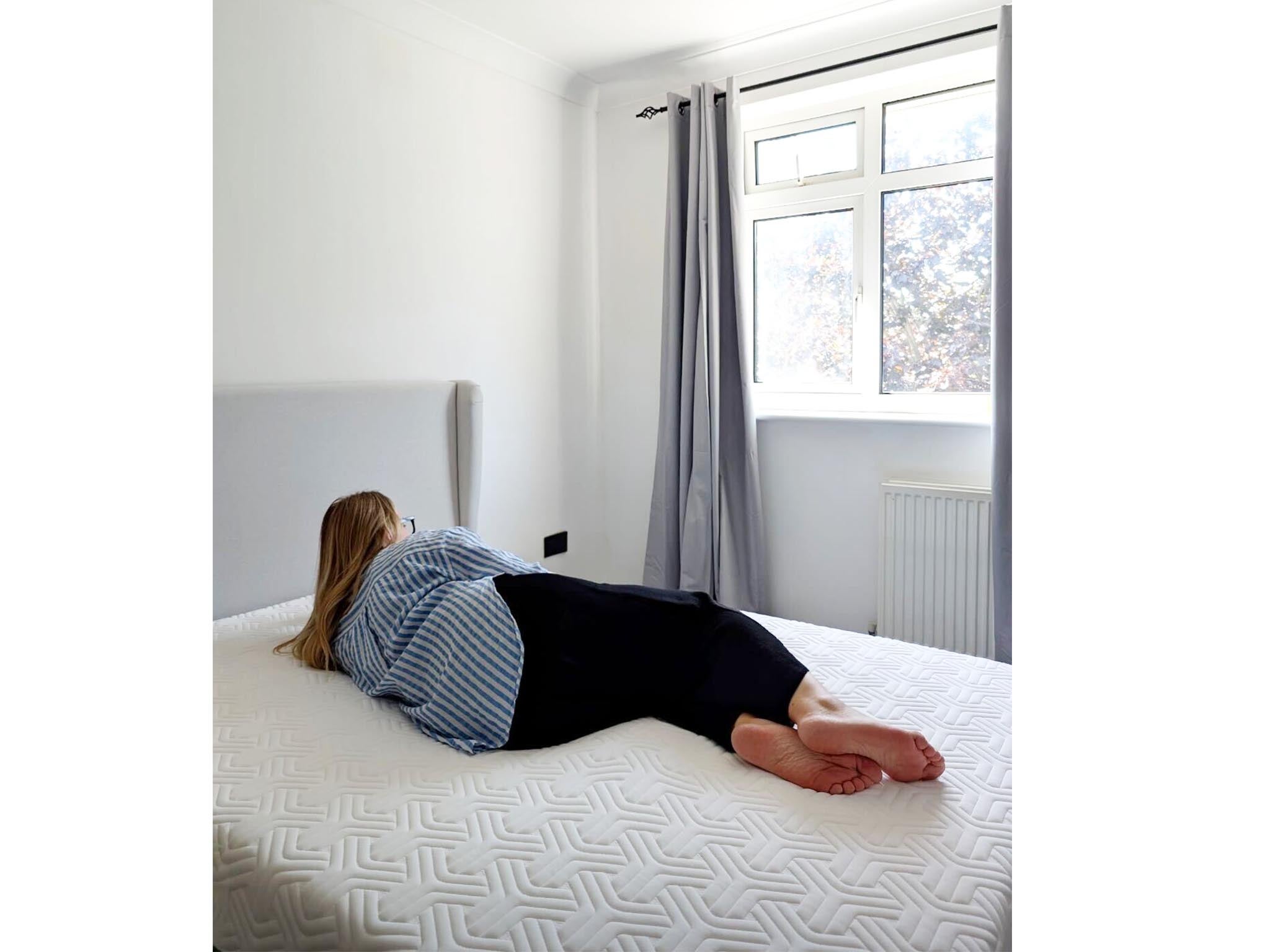
You should also watch out for greenwashing. Latex beds are usually made from rubber, which is derived from the sap of the rubber trees, so it’s technically a renewable resource. That means that lots of latex mattress companies advertise latex beds as “eco-friendly” or “vegan”.
However, latex usually isn’t biodegradable, so it’s not that sustainable, and latex farming often requires deforestation. While it comes from a renewable resource, latex beds are only as eco-friendly as other rubber products like tyres or birthday balloons.
Open-spring mattress
Also known as open-coil or continuous-coil mattresses, these contain one long piece of metal wire coiled into several springs. There’s also an additional border rod or wire to maintain shape and provide structure. It’s a great value-for-money option, although the sides are machine-stitched rather than hand-stitched, they are lighter than other models, making them easy to turn.
However, they tend to be much less supportive than other mattresses, so they are most suited to guest bedrooms or as children’s beds, where they are used occasionally or will need to be replaced regularly anyway. For example, one of our favourite mattresses for children is an open-spring mattress, the Little Folk open coil single mattress (£250, Littlefolksfurniture.co.uk).
What are the size measurements of UK mattresses?
These are the UK standard sizes for mattresses:
- Small single: 75cm x 190cm
- Single: 90cm x 190cm
- Small double: 120cm x 190cm
- Double: 135cm x 190cm
- King size: 150cm x 200cm
- Super-king size: 180cm x 200cm
- Emperor: 200cm x 202cm
- Large emperor: 215cm x 217cm
Mattress firmness
How firm your mattress is will affect how well you sleep. The type of firmness you need will depend on your sleeping position, height and weight.
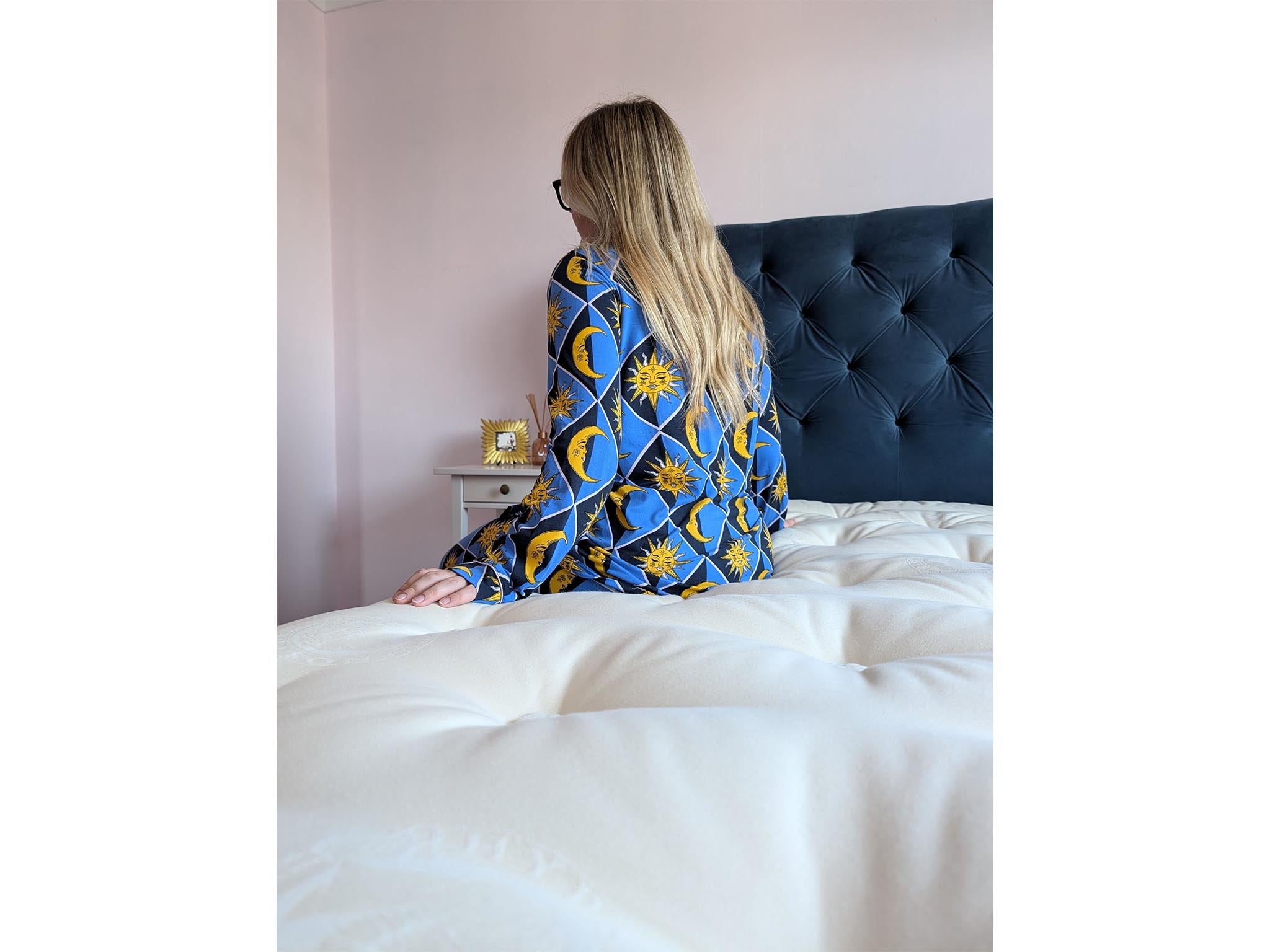
Soft mattresses
Side sleepers or those who change positions during the night are best suited to soft mattresses. This is because the way you sleep already relieves pressure from your spine, so you want your mattress to mould to your body’s natural position.
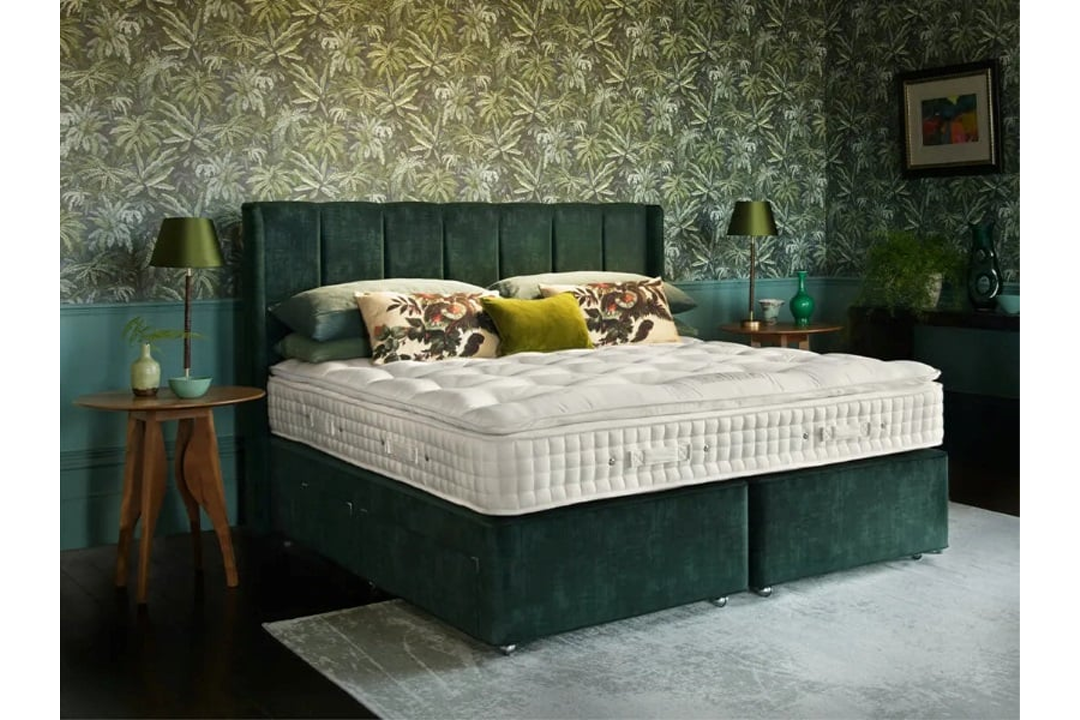
If you want a soft mattress, our favourite ever soft mattress is the Hypnos pillow top elite. It’s incredibly soft, but still supportive; the only problem is that it’s very expensive.
Medium soft mattresses
This is ideal for those who change their sleeping position during the night, as it will still mould to your body position but provide a little more support.

The Dreamcloud luxury hybrid is one of our picks for the best mattress, and it’s a good option for medium-soft. The top layer is a soft, responsive memory foam, but coiled springs in the lower layer stop of from turning too soft and mushy.
Medium firm mattresses
This is best for people who sleep on their back, as they’ll require extra lower-back support, which this type of firmness offers.
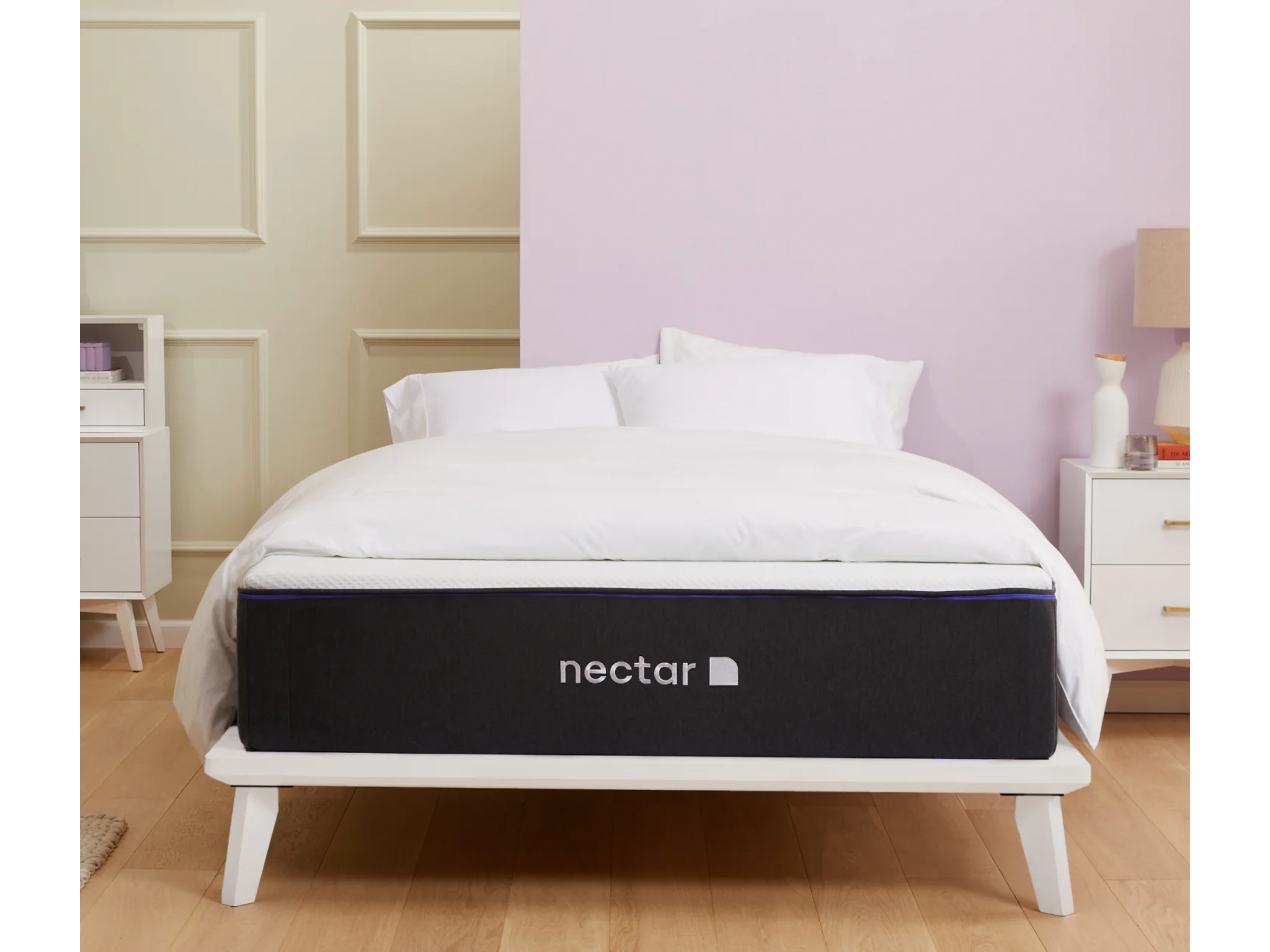
The Nectar premier hybrid is a bed-in-a-box, and another of our favourites. It’s a good pick for a medium-firm mattress, offering softness and comfort without the claustrophobic mushiness you sometimes find with memory foam beds.
Firm mattresses
This type of mattress is ideal for those who sleep on their front, are over 15 stone or suffer from back pain. This is because it will keep your back in a relatively comfortable and stable position, preventing you from sinking into the mattress as you sleep, which can cause lower back pain.
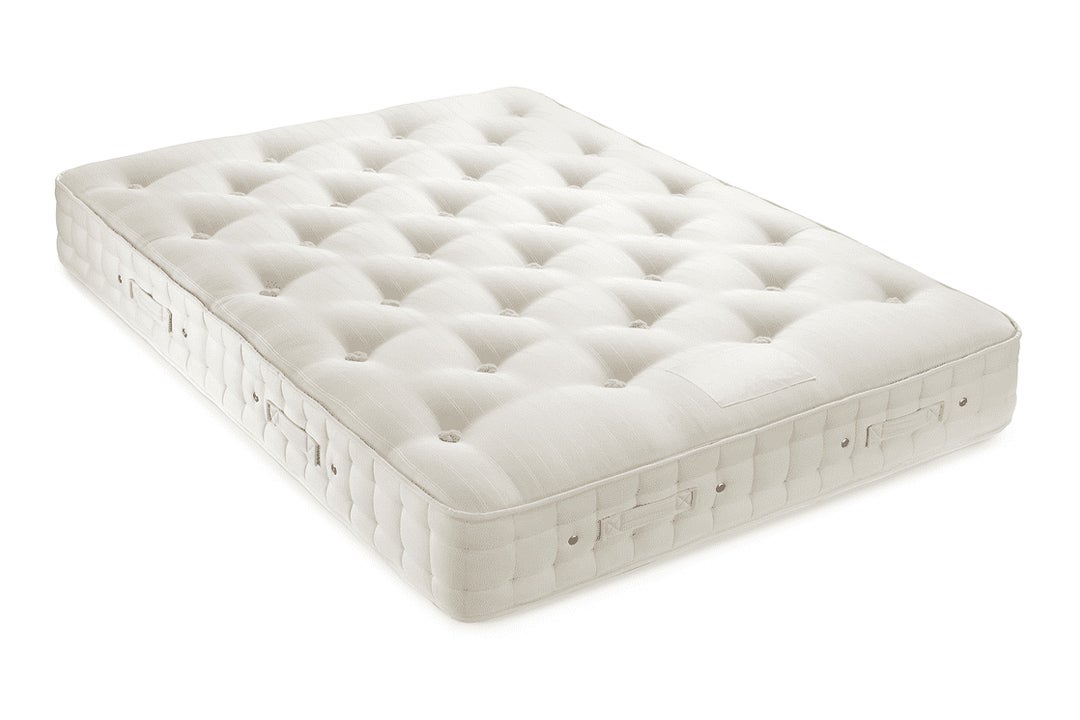
Our favourite tested firm bed is the Hypnos ortho support 7. It has 1200 individually-wrapped springs for a breathable, luxurious, and firm bed. It has excellent motion isolation, though, like most pocket-sprung mattresses, it’s very heavy.
How should you sleep while pregnant?
During your first trimester, you’ll often feel sleepy and want to nap. It’s important to get a lot of rest, so sleep in whichever position feels most comfortable, including on your front or back.
In your second trimester, you’ll feel the baby’s weight, which can feel uncomfortable. A soft mattress will help here. Your bigger bump means that you should sleep on your left side, as sleeping on your back will cause your bump to press against a main blood vessel, which may cause you to feel faint.
During your third trimester, your lower back may be a source of pain as it supports your baby’s increasing weight. To ease this, continue to sleep on your left side and with a pillow under your head, between your knees and under and around your bump, to ease discomfort and take pressure off your muscles and hips. We’ve also reviewed pregnancy pillows to help mums-to-be sleep, where the Purflo breathe pregnancy pillow (£59, Amazon.co.uk) took the top spot.
Read more: Best pregnancy pillows that provide support
What mattress do you need if you suffer from joint or back pain?
If you have joint or back pain, it’s always best to talk to a doctor or physiotherapist. A mattress can alleviate the symptoms of back pain, but it cannot cure them. Before you spend hundreds of pounds on a mattress to try and fix a sore back, make sure you’ve checked that your bad back or joints aren’t caused by other health conditions.
That said, a good mattress needs to give support and comfort, and that’s especially true for anyone who suffers from back problems.
Although a firm mattress is recommended by some retailers, you should always look for a mattress that keeps your back aligned while sleeping and relieves pressure points along your spine and joints. This has a lot to do with your weight (the heavier you are, the firmer your mattress should be), so it’s best to try a mattress before you buy – many online retailers now offer a trial period where you can return the mattress and get your money back if you don’t think it’s right for you.
The pillow you use will also affect your sleeping position and back alignment, so make sure you pick one that suits your needs. Take a look at our pillow reviews to find out more – for a quick recommendation, though, the pricey Simba firm hybrid pillow (£159, Simbasleep.com) was our favourite. For something a little more budget-friendly, we also love the Silentnight airmax pillow (£14, Amazon.co.uk).
How to care for a mattress
Once your mattress is delivered, make sure you let it air for at least four hours. This will remove any storage smells of damp or cold.
If you're wondering how often to clean your mattress, it should be aired weekly by removing the bed linen. Apart from that, it should be vacuumed every six months, unless you have an issue like bedbugs, which should be dealt with immediately.
Remember to turn your mattress regularly, too. This will stop dips from forming and your weight from altering part of the mattress, causing uneven sleeping.
Having a mattress protector will also help keep your mattress clean, prolonging its life. This is a sheet that goes on before your bed linen (and mattress topper) to protect your mattress from any stains or dirt.
You should aim to replace your mattresses every eight to 10 years. This is not only for hygiene reasons but because it will soften over time, reducing the support it gives you. If you feel sore when you wake up or you find you sleep better in other beds, it’s time for a change.
Read more: Best mattress protectors
Do I need a mattress topper?
A mattress topper is an extra layer of cushioning that goes over your mattress before you put your bed sheets on. They provide additional support and comfort while also making your bed feel more luxurious and cosy.
Most beds don’t need them, but if you rent and find that the provided mattress is too hard or too soft, a mattress topper can be a great way of making your bed more comfortable.
If you’re looking for one to complete your bed, take a look at our guide to the best mattress toppers for our tried and tested recommendations. Our top pick is the Simba hybrid topper (£349, Simbasleep.com).
Read more: Best mattress toppers




